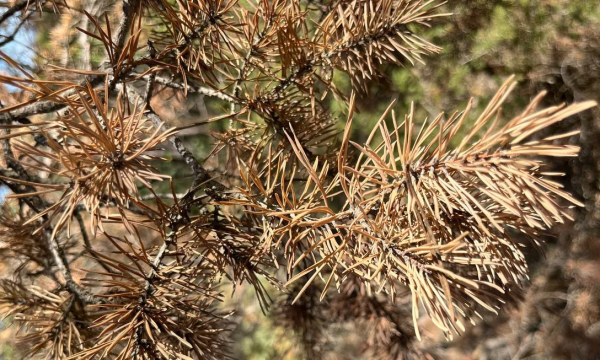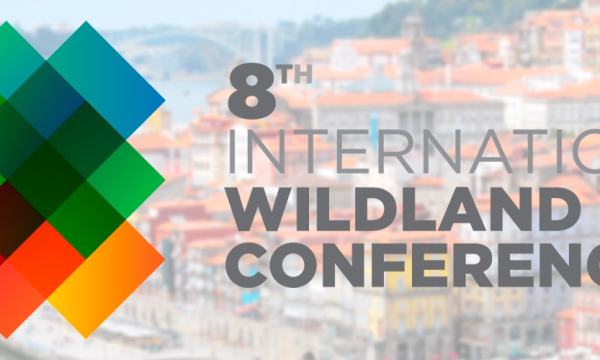On a large scale, we saw similar events in Australia during the 2019-2020 fire season, in California 2020, and without going back as far back in time, we have also seen them in early 2023 in Chile, and now, since May, in Canada.
More than four consecutive months of rapidly spreading, intense wildfires, which have forced, on several occasions, the evacuation of communities due to the risk they posed to society. On the other hand, from the extinction point of view, the government has had to request international assistance, where more than a dozen countries from different continents have contributed, and many of them are continuing to do so.
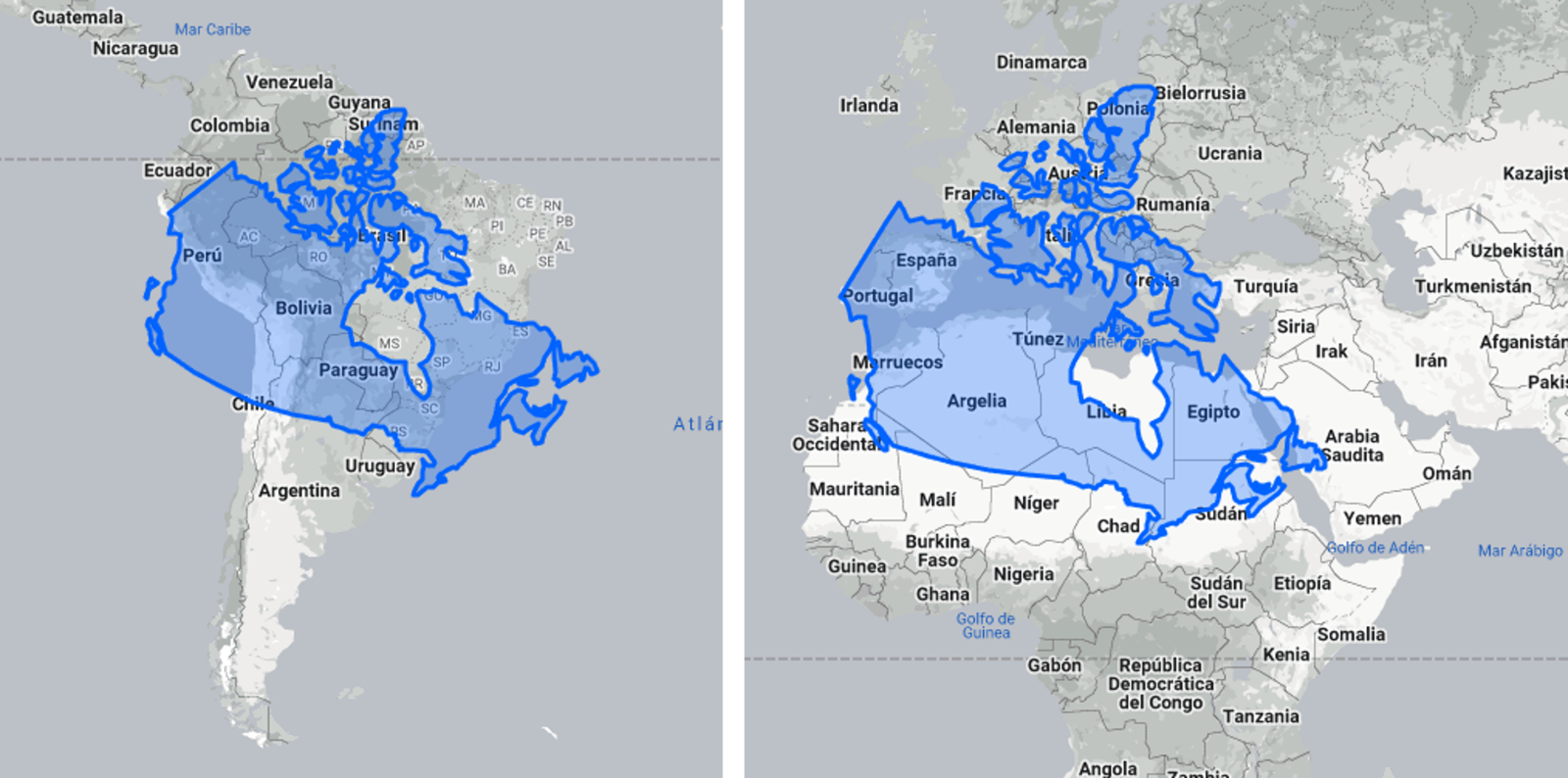
How big is the country of Canada? Many times, due to the projection used in the maps, the dimensions are somewhat distorted. In these images, we overlay Canada with South America (left) and with Europe and Africa (right). Source: https://www.thetruesize.com/
Characteristics of the episode
According to official data from the National Wildland Fires Situation Report, the area burned to date exceeds 17.5 million hectares, more than 650% above the average of the past 10 years, which even for Canada, a very large country, is an inconceivable figure. The interesting fact in this comparison is when we look at the number of wildfires compared to the normal amount, which, although also higher, the ratio is not as abysmal. Meaning that it is not unusual for wildfires to occur in Canada, especially in the western part of the country.

Left: number of fires by province and the total for the country. Right: Area burned (in millions of hectares) by province and total for the country. Source: National Wildland Fires Situation Report.
But what differs now is that the eastern part of the country has also been affected by large wildfires and, in addition, the date on which this episode started is ahead of the normal peak of occurrence, which is usually between July and August. In this sense, it is due to the environmental conditions that allowed the wildfires to spread rapidly and the resulting complications for their suppression, thanks to an abnormally warm and dry weather pattern.
So far this year, several record highs in temperature and record lows in precipitation have been reached, which, like what happened this year, for example, in part of the Iberian Peninsula, the drought had already been dragging on since last year. Weather conditions became more extreme with the greater recurrence and persistence of heat waves, and the lack of effective rainfall. Many of the storms are even dry and accompanied by lightning, which, if combined with available fuel, are quickly capable of starting new wildfires in remote areas.
Experience working with Canada
Mercedes Bachfischer, researcher and member of our TEP team, under the figure of FAST and within the group of remote analysts, had the opportunity to get closer to this emergency. But, however, she wasn't the only member of the TEP community, since one of our current students, David Urueña, coordinator of the UDIF service of the Murcia Region, of the company ORTHEM, also had the opportunity of experiencing the event in Canada, being part of the suppression team sent by Spain.
It is from their stories that we shed a little light on the subject and talk about the characteristics and the way of working on wildfires like the ones that took place there.
-----------------------
The team was assigned to a site within the Quebec province, which although located further north of the main towns, the objective was to protect the most important communication lines and high voltage power lines. It is also worth mentioning that given the size of the country (being the second largest in the world), there is an imaginary geographical limit from which all wildfires occurring at a latitude above this will not be a priority to work and therefore will be allowed to spread freely.
 Comparison of the map with the location of all fires so far in the current season (with a significant concentration of burned areas in both the east and west of the country) vs the occurrence of fires throughout 2022. Source: GWIS
Comparison of the map with the location of all fires so far in the current season (with a significant concentration of burned areas in both the east and west of the country) vs the occurrence of fires throughout 2022. Source: GWIS
As for the characteristics of the site, different from what predominates in Spain, the vegetation has a determining role in the type of wildfire and therefore, the possible operations to be carried out. In this case, the site was surrounded by lakes, peat bogs and woodland, with an extremely high fuel load, even the depth of the organic matter could be quite deep, including mulch, buried trunks and roots. Due to the type of soil that is normally submerged under water, it should also be noted that the tree roots are generally very shallow and, therefore, are easily overturned, which requires special attention when working, to ensure the safety of crew members. Also, in terms of geomorphology, the terrain is fairly flat, with no major landmarks for orientation. In turn, most of the sites are remote, with no roads or infrastructure to assist in firefighting tasks.
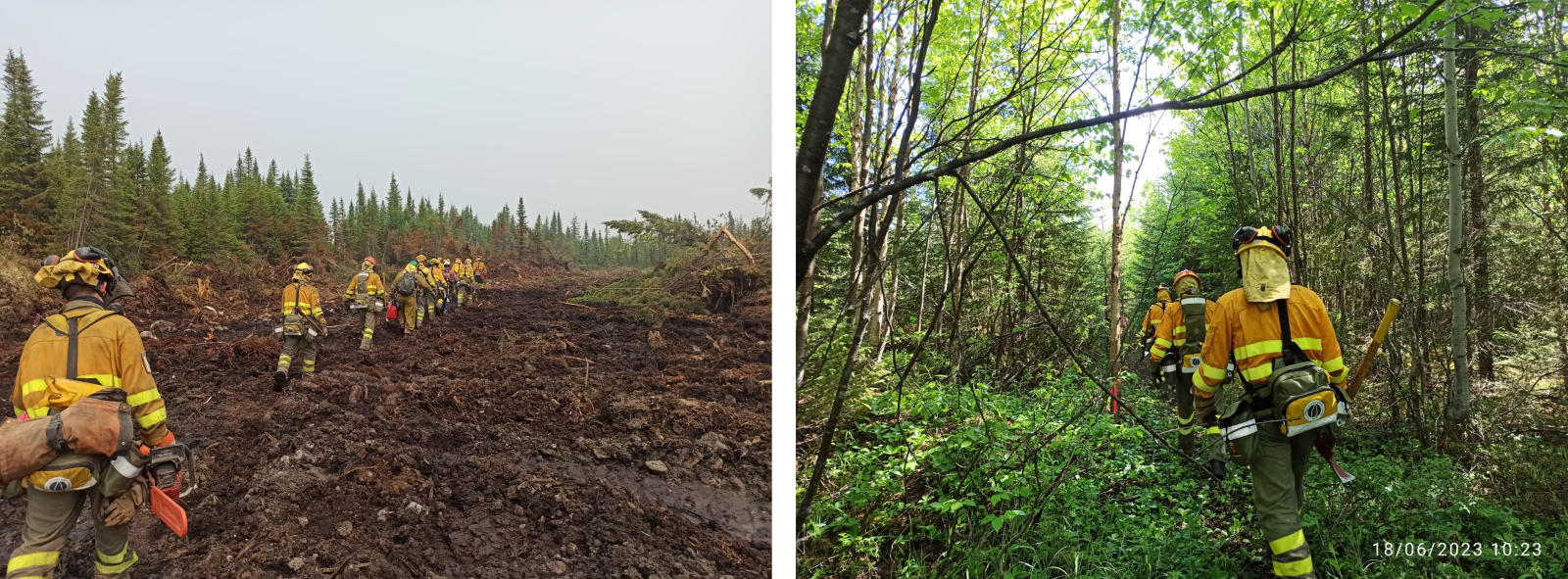
Different scenarios that the Spanish team encountered when working in Canada. Photographs by David Urueña.
Regarding the type of wildfires themselves, a binary behaviour was observed throughout the weeks, in other words, interspersed days of extreme activity, and others where the fire front did not progress considerably. This was due to the daily weather conditions that, with the establishment of a high-pressure centre, with increased temperatures and low humidity recovery during the night, managed to dry the fine fuel, thus increasing the wildfires' rate of spread, the number of possible ignitions, and the capacity to potentially reignite. Additionally, with the accumulated months of drought, in the presence of fire, the entire fuel model comes into play once again.
These are scenarios where the surface fire manages to torch trees, without burning areas evenly. The fire cannot consume all the fuel, yet it can penetrate deeply and be indifferent to the weak and not very persistent rains that occur in the area. This was possible due to the degree of water stress in which all fuels were in general, and hence it was important to keep in mind the possibility of latency, the potential of reignition. Faced with the generation of high intensities, the transition to a plume-driven or convective wildfires that, on the worst days, managed in a matter of hours, to produce runs of more than 10 km.
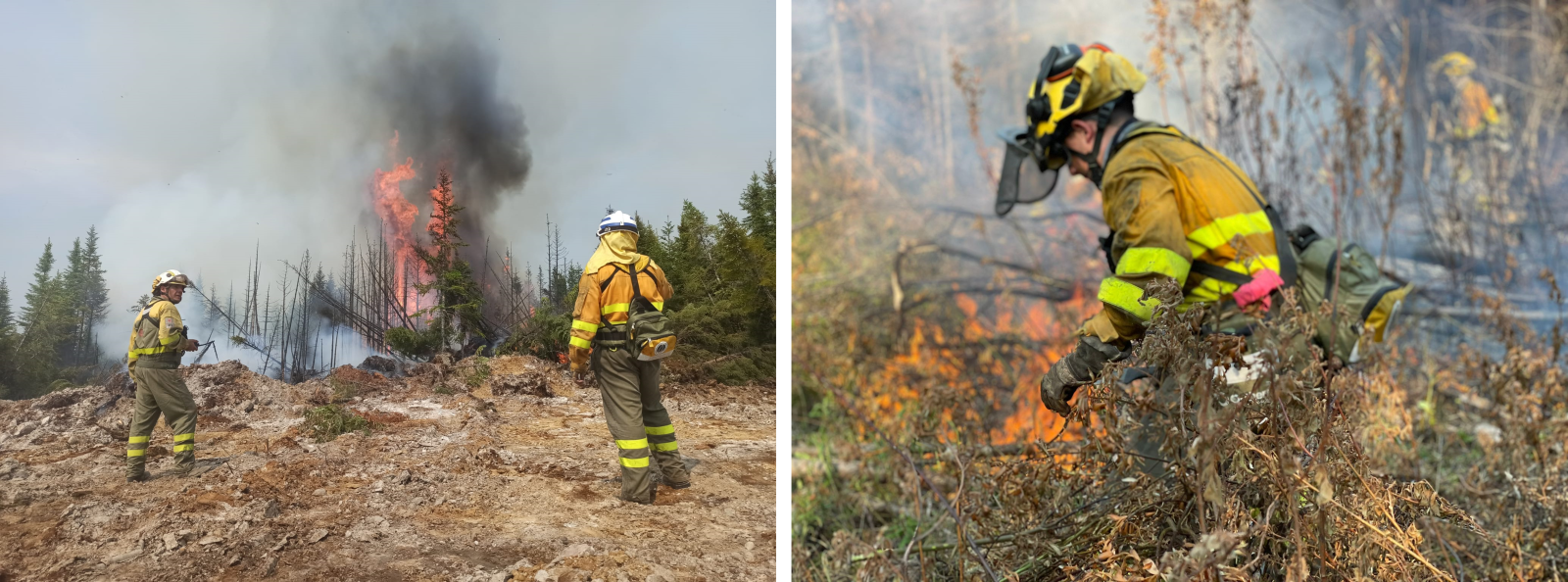
Torching trees, fuel load and fuel status. Photographs by David Urueña.
The moisture content of the fuel, the presence of oxygen, and the type and density of the fuel have an influence on whether the wildfire can penetrate to a greater depth and the type of spread. In some places, even with specific conditions, fuels or soils can also become hydrophobic and repel water.
As we see in our TEP lessons, the toolbox is vast and the important thing is to know when simple operations are enough or when to take advantage of the resources we have and combine them, among which we can consider cooling and increasing fuel humidity, restricting oxygen or separating burned fuel from unburned fuel.
Thus, in the described scenario, mainly portable motor pumps and hose lines were used, with the objective of increasing the moisture content of the fuels and prevent the fire from jumping critical points in accordance with the proposed strategy. Carrying out this task requires large volumes of water, especially when it is the main operation to be carried out, but this kind of resource isn't a limitation in sites like this, but rather, it is the amount of crew available to designate to such large areas.
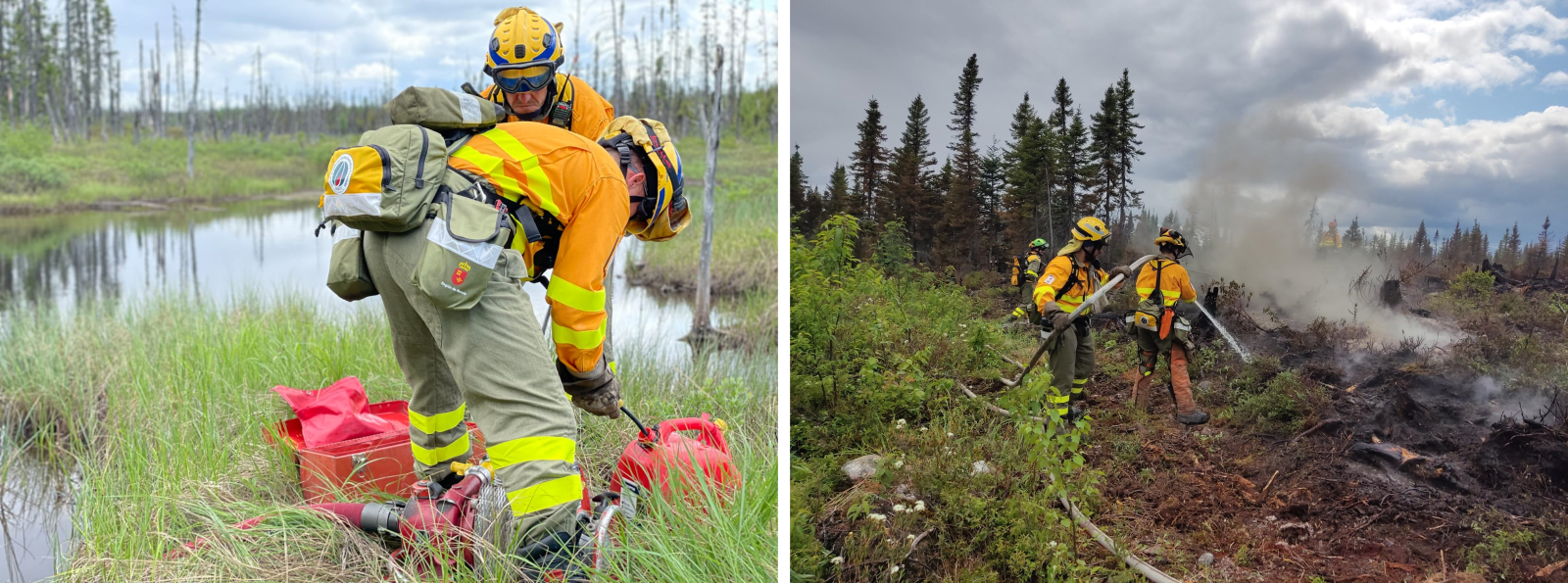
Flooded land, hight fuel load and the use of wet lines to extinguish the fire. Photographs by David Urueña.
On the other hand, work was also carried out with hand tools, such as the cutting tools, or chainsaws, to remove surface fuels, move shallow burning material away from adjacent unburned material, separate fuels and allow water to penetrate. Also, the key was to use these tools to clear access, increase the safety, efficiency and effectiveness of the hose lines and the water used. In terms of safety, it is important to highlight aspects such as not working at night and not working without an airborne helicopter.
In some of these wildfires, due to the large distances and the difficulty to fully suppress them, in order to give operational priority to sites with more potential, it is decided to allow the wildfire to burn freely until it stops, mainly because it reaches deeper inert mineral layers or fuels that are too wet to maintain active combustion. This does not mean that, if this does not occur, it can remain dormant from one season to the next, even though it is at depth, if it has the minimum oxygen and fuel proportions available to be consumed, besides having snow on the surface.
A context and scenario different from the wildfires we usually see, but which, in situations of drought and recurring heat waves, we may experience more frequently. Therefore, it is time to learn even more and anticipate these events in order to avoid the collapse of firefighting services and ensure the safety of society in general.
